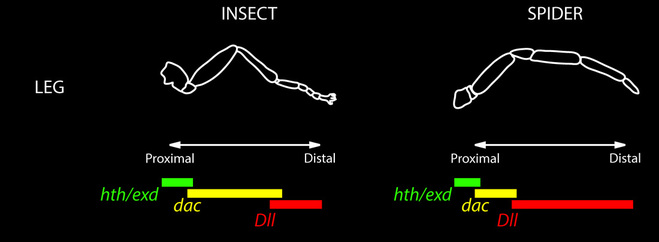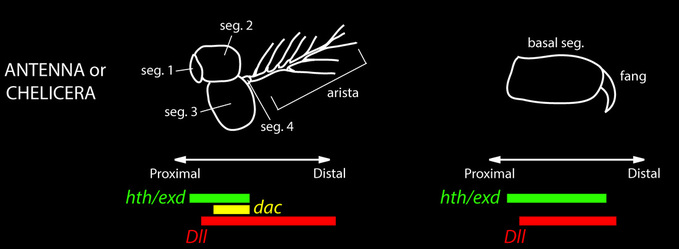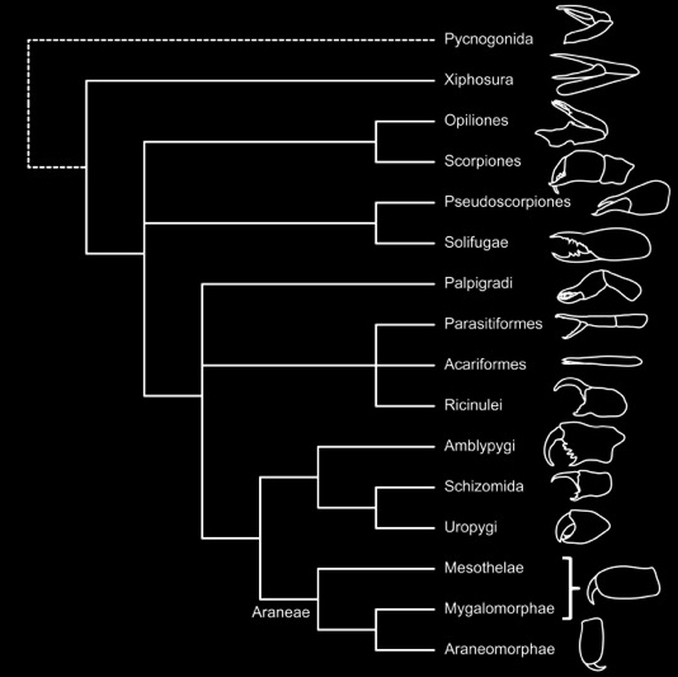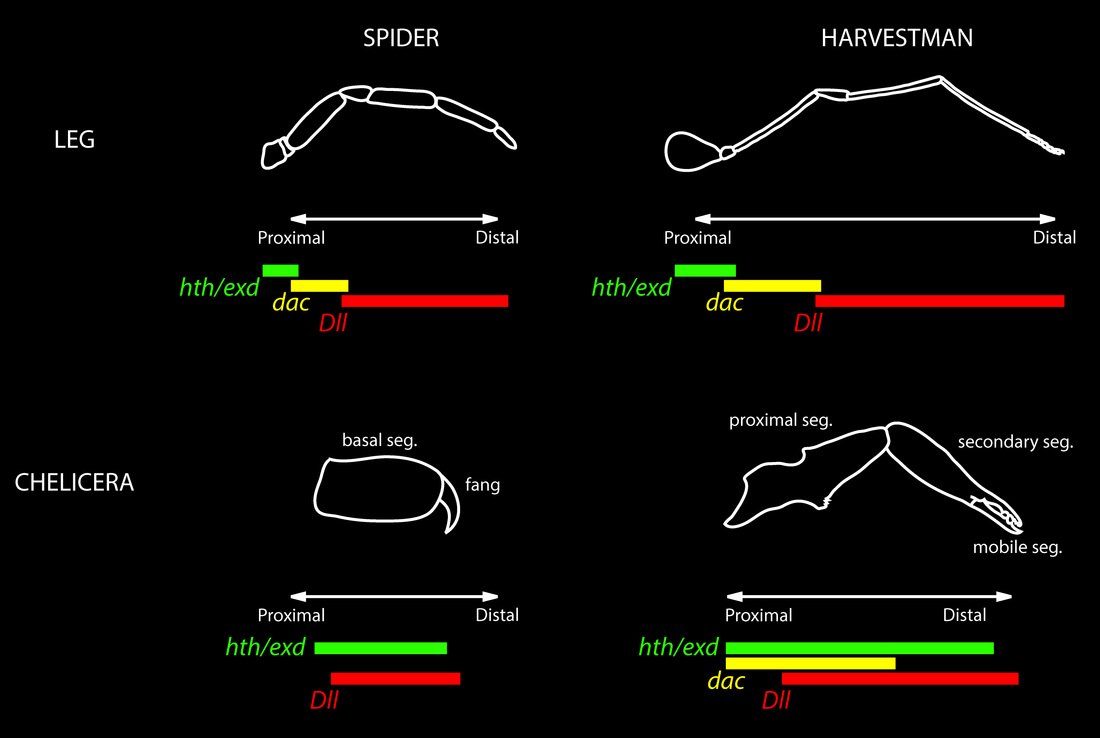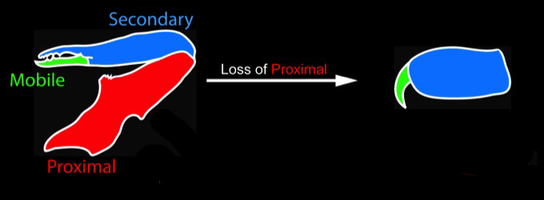Evolution of the chelicera
The main axis of an arthropod's appendage is called the proximo-distal (PD) axis. Four genes are involved in constructing this axis: homothorax (hth), extradenticle (exd), dachshund (dac), and Distal-less (Dll).
In the legs of arthropods, these genes are deployed sequentially along the PD axis in the regions that will form specific segments. The four are commonly called the "leg gap genes" because silencing them results in the loss of the segments that they pattern.
In the legs of arthropods, these genes are deployed sequentially along the PD axis in the regions that will form specific segments. The four are commonly called the "leg gap genes" because silencing them results in the loss of the segments that they pattern.
Modified arthropod appendages, such as antennae and mandibles, are associated with modified deployment of the leg gap genes. In Chelicerata (spiders, scorpions, horseshoe crabs, etc.), the first pair of appendages is called the chelicerae. Note the absence of a dachshund domain in the two-segmented chelicera of spiders.
The absence of dachshund in the spider chelicerae could be unique to spiders or a general feature of this appendage type. But there is great diversity in the morphology of chelicerae. Note the three-segmented cheliceral type in the grade of lineages at the base of Chelicerata, including Opiliones.
We investigated the expression of the leg gap genes in Phalangium opilio and demonstrated that the dachshund domain is retained in the proximal segment of the Opiliones chelicera. Below is a comparison of the expression domains in the legs and chelicerae of spiders and Opiliones.
These data suggest a putative mechanism for the transition of cheliceral types: loss of the proximal segment via the deletion of the dachshund domain.

